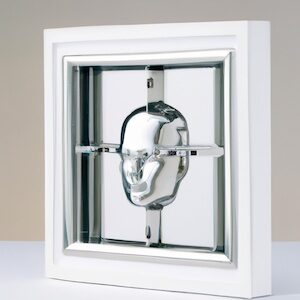By Dr. Ken Broda Bahm:

When you say you’re going to “frame” something in litigation — no, it doesn’t mean your going to blame the wrong person for a crime…necessarily — but instead, the cognitive use of that term refers to communication that encourages a particular way of viewing the events at the center of the case. It is a way of adding a reference point or a way of thinking about the central action in the story that encourages favorable interpretations while discouraging unfavorable ones. That choice of frame can play a critical role. For example, if there has been an injury associated with the use of a consumer product, was it a lightening strike — tragic, rare, and unforeseen? Or was it a sacrifice — a knowing trade-off to exchange safety for material benefit? Of course, the facts will come into play in determining which of those frames a jury might adopt, but the rhetoric and the emphasis will play a role as well.
I think it is useful to see litigation and trial as a kind of “frame game,” in the sense that each side is looking to create a favorable frame and lure jurors into the space of that frame. If the other side has already tried to establish their own frame, you can always attack it and try to reframe. But I and many litigation strategists and social scientists believe there is a durability to first impressions, and therefore an advantage in being first to frame. That advantage can apply in many settings during the litigation process, and in this post, I’ll write about four of them.
Be First to Frame in Motions
A trial is generally preceded by months or even years of motions practice, and as we know, that persuasive battle decides cases far more often than juries do. In that early action during trial, there is an advantage to trying to put a stamp on how the judge sees things, and the prize isn’t always a favorable ruling. For example, you may bring up spoliation and sanctions against the other side, not because you expect to prevail on the issue, but because even if the judge punts and reserves the issue, you still want that judge to have a skeptical eye as their evidence does or doesn’t come in during discovery and testimony. There is both a gate-keeping function and a framing function to your motions.
Be First to Frame in Testimony
When you are examining their witness during deposition or trial, you want to take care in selecting the phrases, definitions, and storyline that you want to suggest to the witness. If you can get them to start using your frame, that’s half the battle (at least). So instead of asking open-ended questions like, “Tell me what happened then,” it is typically better if you can be at the stage of telling them what happened next, and seeing if they’ll confirm it. When witnesses simply say “Yes,” instead of answering in their own words, they are helping you to frame the story in your own terms.
Be First to Frame in Trial (Opening and Voir Dire)
The start of trial, of course, is the most obvious time to encourage your jurors or judge to see the case in your terms, so for that reason, the language, storyline, and metaphors you use should all be carefully considered, and potentially tested, so that they encourage the perspective and reference points that you are after. Even when the other side opens first, you may still have the chance to be the first to frame if they’ve covered the issues, but not necessarily characterized them. And, when you have an opportunity for attorney-conducted voir dire, that gives you another earlier opportunity to suggest a frame, or even to ask strategic and targeted questions that encourage potential jurors on the panel to do that for you.
(Probably) Be First to Frame in Negotiations
Regarding the negotiations that are happening between the sides throughout this litigation and trial process, experts will naturally disagree over whether it is better or worse to make the first offer. But the classic intuition seems to be that, because that first offer often sets the terms and serves as an anchor (i.e., “He offered $1 million, we responded with half of that amount“) there can be a big advantage to being the first out of the gate to try and set the terms in a negotiation. This applies to all agreements and not just settlements, by the way (a reason why I prefer to propose a supplemental juror questionnaire to the other side rather than waiting for their draft). But when it does come to settlement, the only downside to going first is when you don’t know enough about their position and your first offer ends up raising their expectations. In the presence of good information, however, the advantage is usually to go first.
Broadly, and at all other stages during litigation, I think the message is that litigators should be thinking not just about the facts and the law, but should also be thinking hard about the boxes that they’re going to be asking judges, jurors, witnesses, and adversaries to fit those facts and law into.
____________________
Other Posts on Framing:
- Practice Moral Reframing
- To Convince on Negligence, Frame It as “Gain”
- Use Moral Framing as an Argument Strategy
____________________